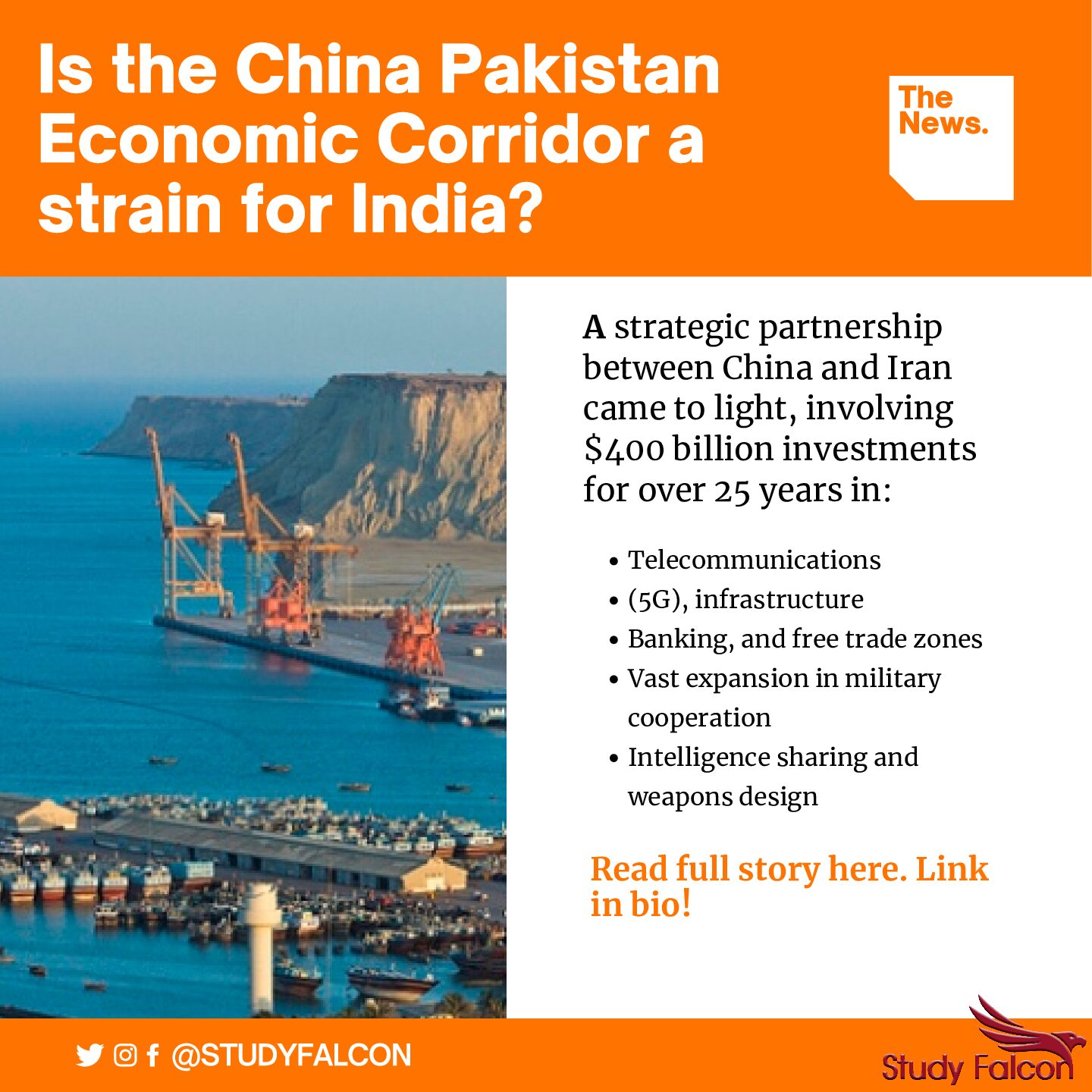Recently, details of a 25-year strategic partnership between China and Iran came to light, sparking a furious debate among Iran’s netizens. The plan calls for a $400 billion investments for over 25 years in telecommunications (5G), infrastructure, banking, and free trade zones as well as a vast expansion in military cooperation to include intelligence sharing and weapons design. Amid all the hurrah from Iran, there has been a conspicuous silence from the Chinese side, and it won’t hurt to wait for official confirmation from Beijing before rushing to judgement on leaked documents from Tehran.
Still, the rapprochement between Beijing and Tehran is likely to have far-reaching effects in South Asia, especially for Pakistan
The China Pakistan Economic Corridor (CPEC) is one of the constituent corridors of the Silk Road Economic Belt (SREB) and is the biggest, most ambitious, and most developed part of China’s Belt and Road Initiative. Chinese policymakers have even dubbed it as the flagship project of the BRI, China’s Belt and Road Initiative (BRI).

Since its formal launch in 2015, CPEC has sought to address Pakistan’s longstanding infrastructure needs and power shortages. Over the last five years, China has funded the construction of multiple roads in the country, while in exchange Chinese state-owned enterprises (SOEs) have set up their power plants in Pakistan. In the long run, a network of roads, pipelines, and railway lines will be linked to the southern port city of Gwadar in Pakistan’s Balochistan province to Kashgar in western China’s Xinjiang region, opening up new avenues for trade, import and export. Developing the transport infrastructure in between Pakistan and China is sure a formidable challenge as the route passes through some of the world’s most inhospitable terrain.
While both China and Pakistan have framed CPEC as a “win-win” investment package, geopolitics in this case plays a more significant role than either side is willing to admit. China’s energy needs are rapidly growing, and Chinese policymakers fear the U.S. Navy’s ability to disrupt oil supplies coming from the Middle East could have a destructive impact on China’s economy, especially in times of conflict, which is dependent on energy imports. If brought to fruition, CPEC’s Gwadar-Kashgarpipeline project could solve China’s “Malacca dilemma” and present an alternative, dependable land route to satisfy China’s growing energy needs, all while accelerating the “Go West” development program. The recent tensions between the United States and China have further raised the importance of developing an alternate route, despite the significantly higher costs of such an undertaking.

However, the natural outgrowth of CPEC seemed to have been constrained by India’s funding of the Chabahar port project in Iran. To India, Chabahar, which is located only 170 kilometres from Gwadar, presented an opportunity to interrupt China’s “String of Pearls”from Southeast Asia to the Middle East, giving CPEC a little room to grow. However, the proposed China-Iran deal and India’s unceremonious exit from a Chabahar railway project has turned Delhi’s strategic fiat. Without Chabahar, India loses its primary lever of influence into Afghanistan and Central Asia resulting in a India strategic interests under siege from Ladakh to Iran. These developments undoubtedly play to Pakistan’s advantage, which is definitely not a great deal for India.
The China-Iran deal is a natural symbiotic partnership for all the parties involved. Understand this, in this manner, China gets cheap Iranian oil, and Iran gets a financial lifeline. Pakistan could become the transit hub of China’s Middle East trade and energy supplies, while India will be under pressure from all sides. India has once again had its regional strategic ambitions thwarted and CPEC has the potential to be internationalized, but the question remains whether Pakistan can capitalize on the situation and use its favourable position linking China and Iran to spur additional Chinese investment, on more favourable terms. If Pakistan can use its strategic location to become the economic backdoor to China’s western provinces, then the answer to the question will be a definite ‘Yes’. The China-Iran deal may also incentivize Pakistan to repair relations with Iran, which have traditionally been strong. However, recently relations have been strained between the nations by accusations that Iran has not done enough to deal with Baloch insurgents operating out of eastern Iran. Then there are also concerns which are out of Pakistan’s hands. In a statement released last month, the U.S. State Department threatened sanctions on Chinese companies doing business with Iran, and sanctions could have a direct wash (doom) effect on CPEC itself. The Thar coal project in Sindh, which Pakistan hopes will make the country self-sufficient in power generation, is dependent on technology from the U.S. firm General Electric. Sanctions on GE’s Chinese partners might make GE wary to provide equipment to develop Thar project. And let’s not forget to assume that Saudi Arabia’s professed interest in CPEC also went up in smoke when Iran signalled its own intent to join last week.










